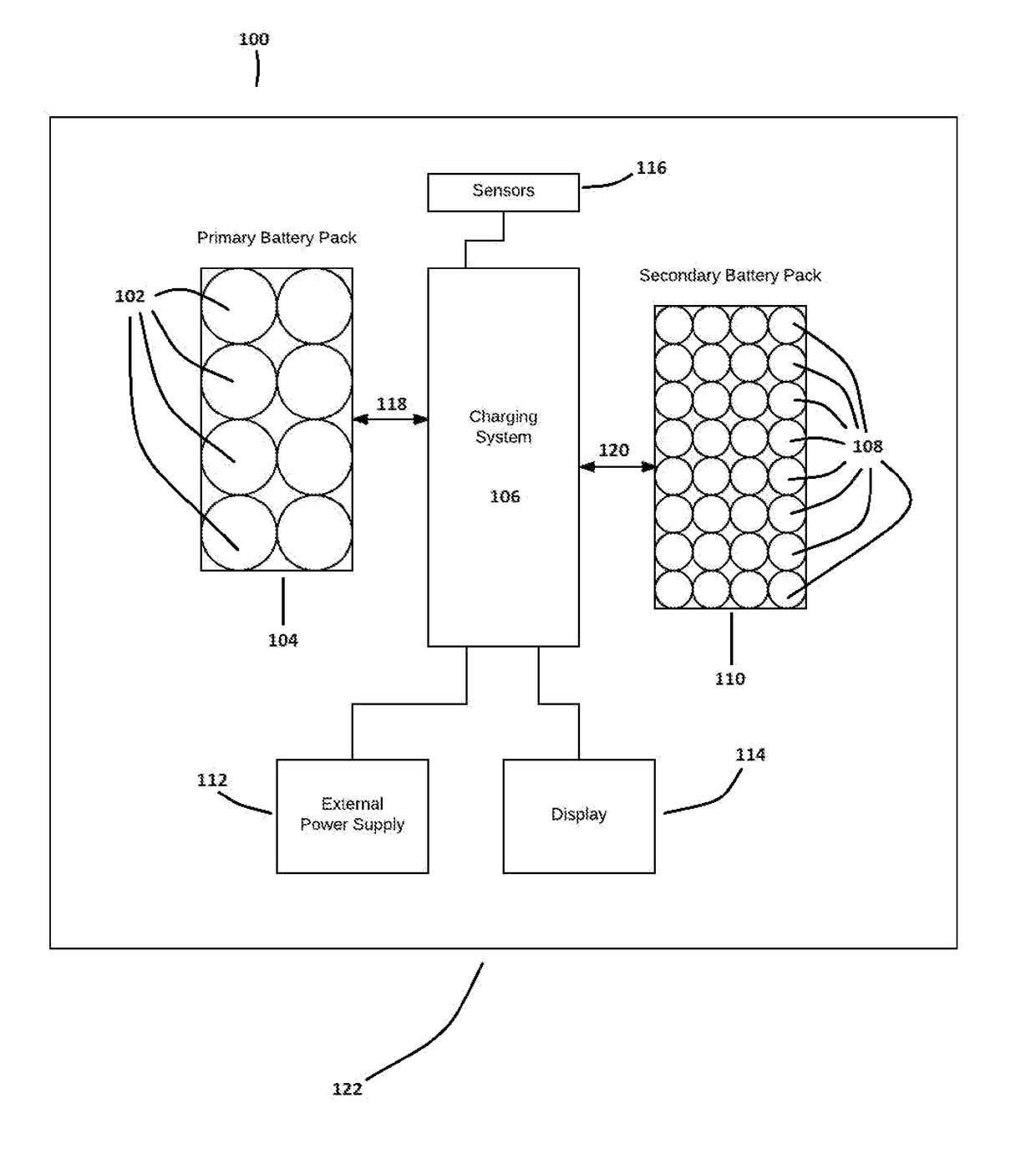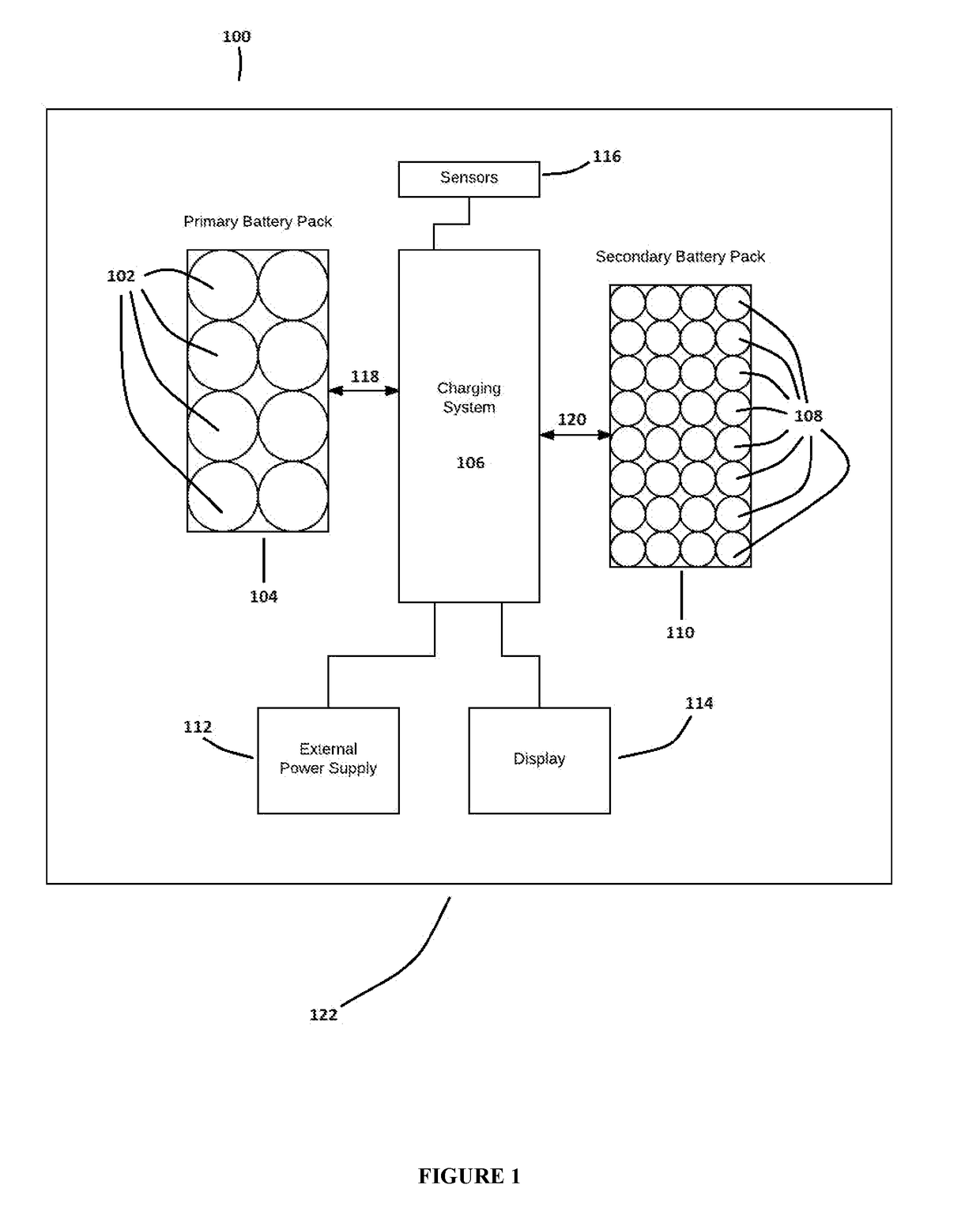Extending shelf life of rechargeable batteries
a rechargeable battery and shelf life technology, applied in the field of extending the shelf life of rechargeable batteries, can solve the problems of high discharge rate, limited use, and secondary batteries typically having a much more limited shelf life than primary batteries, and achieve the effect of easy replacemen
- Summary
- Abstract
- Description
- Claims
- Application Information
AI Technical Summary
Benefits of technology
Problems solved by technology
Method used
Image
Examples
Embodiment Construction
[0012]The present disclosure describes devices and methods for extending the shelf life of rechargeable batteries. A primary battery, such as a lithium battery, may be used to maintain the battery capacity of a secondary battery, thereby extending the shelf life of the secondary battery. A charging system may be used to monitor one or more secondary batteries or to determine when or how to apply power from one or more primary batteries to the one or more secondary batteries. The charging system may use the one or more primary batteries to maintain a desired state of charge (e.g., 40%, 95%) in the one or more secondary batteries. The one or more primary batteries, the one or more secondary batteries, and the charging system may be integrated into one battery package or may be distributed across separate modules.
[0013]A hybrid battery system comprising one or more secondary batteries along with one or more primary batteries to recharge the secondary batteries to maintain a sufficient ...
PUM
| Property | Measurement | Unit |
|---|---|---|
| voltage threshold | aaaaa | aaaaa |
| voltage | aaaaa | aaaaa |
| voltage | aaaaa | aaaaa |
Abstract
Description
Claims
Application Information
 Login to View More
Login to View More - R&D
- Intellectual Property
- Life Sciences
- Materials
- Tech Scout
- Unparalleled Data Quality
- Higher Quality Content
- 60% Fewer Hallucinations
Browse by: Latest US Patents, China's latest patents, Technical Efficacy Thesaurus, Application Domain, Technology Topic, Popular Technical Reports.
© 2025 PatSnap. All rights reserved.Legal|Privacy policy|Modern Slavery Act Transparency Statement|Sitemap|About US| Contact US: help@patsnap.com


